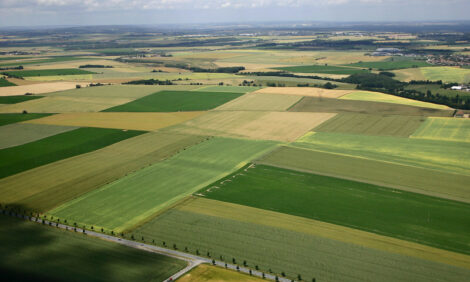



Spring Beef Demand And Record High Cattle Prices
US - In 2010, the US exported nearly 2.3 billion pounds of beef or 8.7 per cent of the nation’s 26.3 billion pounds of commercial beef production last year. In 2010, the US exported nearly 2.3 billion pounds of beef or 8.7 per cent of the nation’s 26.3 billion pounds of commercial beef production last year. In the first two months of 2011, beef exports have been up nearly 25 per cent from year ago, keeping up the trend of last year’s dramatic increase. In addition, so far this year South Korea has been the second largest foreign market for US beef at 69 million pounds, up 130 per cent from the same period last year. Exports to Japan have increase by 62, although the impact of the tsunami disaster will not be fully known until the March export numbers are reported.
Exports to Canada are up 21 per cent, while exports to Mexico, the largest market for US beef are down four per cent from the same period last year. In the first two months of 2011, beef exports have been up nearly 25 per cent from year ago, keeping up the trend of last year’s dramatic increase.
In addition, so far this year South Korea has been the second largest foreign market for US beef at 69 million pounds, up 130 per cent from the same period last year. Exports to Japan have increase by 62, although the impact of the tsunami disaster will not be fully known until the March export numbers are reported. Exports to Canada are up 21 per cent, while exports to Mexico, the largest market for US beef are down four per cent from the same period last year.
The increase in foreign demand has added to an already strong domestic demand, and a tighter supply of heavy market ready cattle has resulted in record high fed cattle prices. Lighter cattle are being procured by packers as they dig deeper into feedlot show lists in order to keep up with demand. Live fed cattle weights in have been near or below 1300 pounds on the average during April, a level not seen since June of last year. Dressed steer weights in April were down four per cent from the beginning of the year while prices are up more than 13 per cent.
A dramatic increase in the price spread between choice and select boxed beef prices is further evidence that slaughter cattle are carrying less finish than they had been and the tighter supply of choice beef is coming into align with demand. Total beef production in the first quarter was up nearly 2.5 per cent, due principally to the increased slaughter numbers.
The increase in foreign demand has added to an already strong domestic demand, and a tighter supply of heavy market ready cattle has resulted in record high fed cattle prices. Lighter cattle are being procured by packers as they dig deeper into feedlot show lists in order to keep up with demand. Live fed cattle weights in have been near or below 1300 pounds on the average during April, a level not seen since June of last year.
Dressed steer weights in April were down four per cent from the beginning of the year while prices are up more than 13 per cent. A dramatic increase in the price spread between choice and select boxed beef prices is further evidence that slaughter cattle are carrying less finish than they had been and the tighter supply of choice beef is coming into align with demand. Total beef production in the first quarter was up nearly 2.5 per cent, due principally to the increased slaughter numbers.
While cash cattle prices in Iowa seem to have peaked in the first half of April, there is still plenty of steam in the market. Historically there has been a spring run up in cattle prices in preparation of grilling season and this year was no exception. Figure 1 below is a graph of the Iowa/ So. Minnesota live cattle prices. The spring price rally started earlier and was stronger than usual, and for the most part has maintained itself. While cash cattle prices in Iowa seem to have peaked in the first half of April, there is still plenty of steam in the market.
Historically there has been a spring run up in cattle prices in preparation of grilling season and this year was no exception. Figure 1 below is a graph of the Iowa/ So. Minnesota live cattle prices. The spring price rally started earlier and was stronger than usual, and for the most part has maintained itself.
Figure 1. 5 Area Weighted Average Live Steer Price
Looking into the summer months, cattle prices will continue to be nearly 20 per cent higher than a year ago. By the end of the third quarter cattle on feed numbers are expected to be lower further tightening beef supplies. For now cattle on feed numbers are up 5 per cent from a year ago, bolstered in part by the high number of placements of cattle from the drought stricken areas of the Southern Plains.
With less capacity in pastures many would-be stocker cattle have gone to the feedlot, adding a temporary influx to a tight feeder cattle market. Feeder cattle supplies will become smaller for the next several years and competition from larger feedlots in Nebraska, Kansas and Colorado will continue to put bullish pressure on the market and margins will remain tight.
Despite some softening the live cattle futures price forecast in the second half of April, the market is still expecting strong cattle prices in the second half of the year. While this is good news to producers, profitability will be elusive at current feed prices. Price protecting corn or alternative feed concentrates may be the key to profitability in the future, just as it was in the first half of this year.


